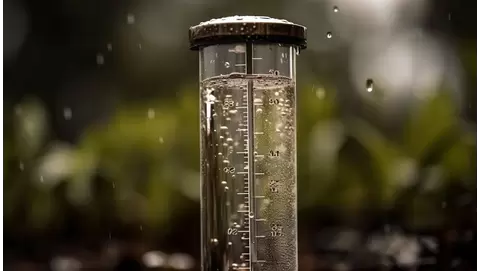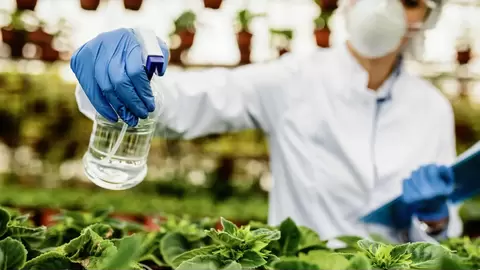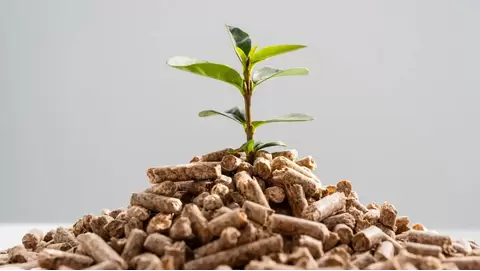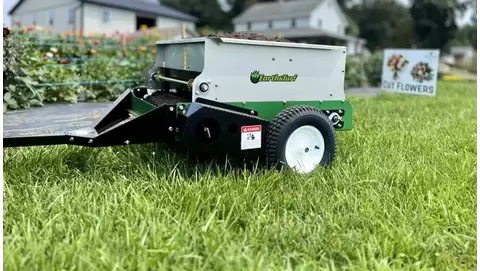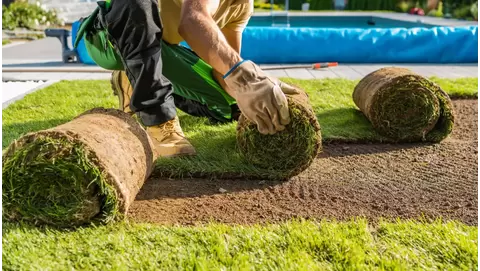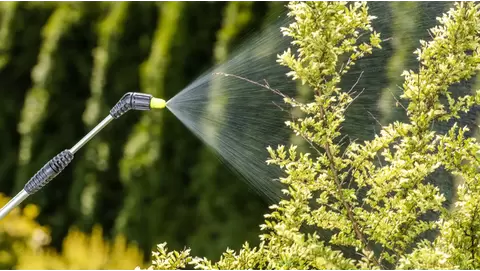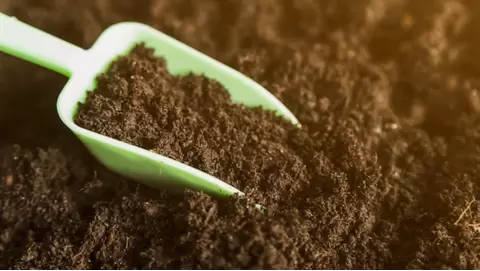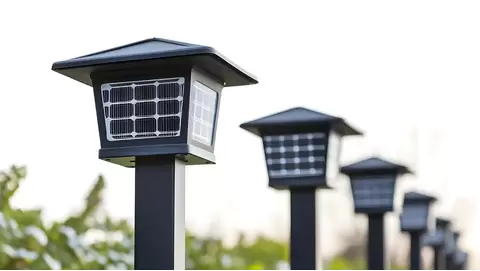
Best PAR Meters for accurate grow light measurement
Plant light is key to plant growth, especially in indoor gardens and greenhouses. Plants use light to perform the process of photosynthesis which helps them grow and remain healthy. But not all lights are helpful for plants. To achieve optimal results, growers need to measure the correct type and quantity of light. This is where the PAR meters come into play.
A PAR meter is a device which measures the amount of PAR light that reaches a plant. This enables individual plants to be grown with the ideal environmental conditions. This aids indoor gardeners, greenhouse owners, and plant growers to adjust the amount of light they provide. With an effective PAR meter, avoid issues such as too much or little light, energy waste, and bad plant growth.
To enable accurate Photosynthetically Active Radiation (PAR) measurement, Growcycle offers specialized PAR meters. The use of these devices allows growers to control lighting conditions accurately adapted to the plants' needs through monitoring which lighting conditions are required for each growth period, guaranteeing they receive the right spectrum for photosynthesis and healthy growth.
What is PAR?
Photosynthetically Active Radiation (PAR) describes the wavelengths of light that plants utilize for photosynthesis. It includes wavelengths between 400 and 700 nanometers (nm), including blue, green, and red wavelengths within the spectrum. This is the only part of the light spectrum that directly powers plant growth via photosynthesis.
- Blue Light (400–500 nm): Promotes robust root formation and foliage growth.
- Green Light (500–600 nm): Not fully absorbed but some penetrates plant canopies and helps lower leaves.
- Red (600 – 700 nm): Promotes flowering and fruiting, so it is critical for bloom-heavy crops.
PAR is listed in micromoles per square meter per second (µmol/m²/s), the number of photons is in the 400–700 nm range that hit an area, per second. This measurement is important because excessive or insufficient light can affect plant growth and waste energy.
Basics of Light Measurement
Most people think of light in lumens or lux, both of which are designed for human vision and not plant growth:
- Lumens are a metric focusing on the amount of visible light produced by a light source, and how bright that light appears to the human eye.
- Lux is a measure of light intensity over a surface area, but it is not sensitive to the wavelengths that matter most to plants.
- The photosynthetically active radiation (PAR), which directly relates to the light contributing to photosynthesis, is therefore the best metric for horticultural lighting.
Because lumens and lux work in favor of human vision, they do not reflect whether plants receive the optimal spectrum of light or not. While higher lumens means that the light source is brighter, it still may not contain the necessary red and blue wavelengths that are essential to plants. PAR measurements enable growers to tailor lighting conditions to their crops for optimal intensity and quality of light, which helps plants grow as efficiently as possible.
How PAR Meters Work
PAR meters detect the number of photons within the 400–700 nm range using quantum sensors. It differs from conventional systems, which express brightness (lux, or lumens) owing to the fact they measure it while quantum sensors count photons which makes them more accurate for measuring light plant exposure. Types of PAR sensors include:
- The most common type of sensors are silicon photodiodes, which are inexpensive, though they cannot accurately read all the wavelengths.
- The full spectrum quantum sensors are efficient in measuring the full range of PAR wavelengths.
- The submerged PAR sensors are used under water for aquatic plant cultivation.
Benefits of Accurate Grow Light Measurement
Whether plants are indoors or outdoors, measuring grow light levels is critical for the growth of healthy plants, higher yields, and proper energy use. Growers can adjust their lighting setup accordingly if they use PAR meters, which help ensure plants receive the proper amount of photosynthesis. Here are the key benefits of accurate grow light measurement:
1. Optimizing Plant Growth
Plants need exactly the right amount of PAR (Photosynthetically Active Radiation). Too little light slows their growth, while too much can be stressful or damaging. By establishing PAR levels, growers can tweak their illumination arrangement to optimize for different stages of plant development such as seedlings, vegetative development, and flowering.
2. Improving Crop Yield and Quality
Measuring light correctly is key to creating conditions to maximise photosynthesis to grow plants quicker, healthier, and higher yielding. Commercial growers using PAR meters typically see higher yields and better quality crops.
3. Preventing Light-Related Plant Stress
High light can cause leaf burn, bleaching, and stunted growth in plants. Plants with access to too much light often cannot solubilize energy properly, resulting in stress and slow growth. Growers can avoid overexposure and optimize light for healthy production with a PAR meter.
4. Increasing Energy Efficiency & Reducing Costs
Over-lighting consumes electricity and raises energy costs without enhancing pot growth. It allows for the accurate quantification of light, and growers are then able to optimize their lighting systems according to their needs, thus saving energy and money.
5. Supporting Scientific and Data-Driven Growth
Contemporary agriculture and indoor gardening are relying on data collection and precision growing methods. One of the best tools for measuring light intensity is a PAR meter. Most of the PAR meters under review are advanced models with data logging capabilities, allowing growers to identify trends over time and adjust their lighting strategy to increase the effectiveness of their grow lights.
6. Adapting to Different Growing Environments
Light measurement is useful for a range of growing systems. PAR meters make it easy to simulate natural sunlight in an indoor garden by calibrating the artificial lights’ output. PAR meters can also be used by greenhouse growers to monitor light levels in natural conditions and determine when to supplement those with artificial lighting.
Key Features to Look for in PAR Meters
Here are the important features to consider when purchasing a PAR meter to ensure growers are getting accuracy, usability, durability and value for their investment.
Accuracy
Accuracy is one of the most vital aspects of selecting a PAR meter. An accurate sensor makes sure that the plants get the right amount of light needed for the best growth. Professional PAR meters measure the number of photons within the 400–700 nm range using quantum sensors, not just how bright it is.
Calibration
Calibration also plays a crucial role in maintaining long-term reliability. Sensors can drift over time, causing inaccuracies in sensing. Commercial-quality PAR meters are factory calibrated and can be recalibrated over time to get readings to remain accurate. Some even have automatic calibration features to make life easier.
Ease of Use
A quality PAR meter should be user friendly, even for novices. Some key features that enhance usability are:
- Digital screens clearly showing µmol/m²/s PARE.
- Basic button layouts for fast changes and readings.
- Waterproof design, which is a must for workouts monitoring via Bluetooth and through smartphone-connecting platforms.
- Wireless operation is helpful in such large growing spaces where installing wired meters can be challenging.
Durability and Build Quality
Grow environments can be moist, hot, or contract exposure to chemicals and water. PAR meters are often also built for these strains if one were to operate outside a traditional greenhouse or hydroponic setup. Here are the key durability features to look out for:
- IP ratings for water and dust resistance to prevent environmental damage.
- Built to last with a strong design for tough use.
- Shock resistant, which helps to protect against damage of accidental drops.
Versatility
There are more than just basic light measurement PAR meters. Advanced features can improve usability and efficiency, e.g.:
- Data logging, which captures light levels over time for subsequent analysis.
- It can be used to assess light intensity at different heights or angles due to adjustable measurement settings.
- Seamless integration with environmental sensors, such as temperature and humidity meters, for a comprehensive growing experience.
Top 5 PAR Meters for Accurate Light Measurement
PAR meters are the tools that allow the grower to measure the light plants receive, to ensure it falls within the optimal range for photosynthesis. Here are the 5 best PAR meters for led grow lights:
1. PHOTOBIO Advanced Quantum PAR Meter
The PHOTOBIO Advanced Quantum PAR Meter accurately measures light in the 400–700 nm range. It is the spectrum used by plants for photosynthesis. Commercial growers who require precise readings that are critical in maximizing plant growth in commercial operations can benefit from this meter.
Simple to use and built to withstand the rigors that can come with demanding growing conditions, this device means less time and energy spent on the monitoring aspect of growing. For commercial growers, this allows for adjusting lighting systems to maximize the light used and reduce the waste of energy.
2. Quantum PAR Meter
The Quantum PAR Meter- Another great option from Growcycle. This meter is trusted for its accuracy and ease of use, making it a great choice for anyone growing indoors and outdoors.
It gauges the quantity of photosynthetically active radiation (PAR) that plants receive, so that they can receive the light necessary for good growth. Equipped with a crisp and clear digital display along with a simple interface, this user-friendly model can be operated even by those with no experience.
3. LI-COR LI-250A Light Meter
The LI-COR LI-250A Light Meter is a common instrument among researchers and commercial growers because of its versatility and no-nonsense, precise measurements. So this meter can measure PAR and other light parameters to give a better insight into grow environment. Its rugged construction means that it can handle the rigors of lab, greenhouse, or field use.
4. Apogee Instruments MQ-500 Quantum Light Meter
One of the most important tools is the Apogee MQ-500 Quantum Light Meter, which is accurate and rugged and also widely used in the field and lab. This meter is useful for outdoor and greenhouse growers, providing accurate PAR measurements. It has a durable but light weather-resistant construction so it will continue to work even in harsh environmental conditions. It is perfect for those who need a meter that will survive high heat, humidity or even water.
5. Spectrum Technologies LightScout Quantum Light Meter
Spectrum Technologies LightScout Quantum Light Meter is particularly suited for greenhouse growers and for field applications. This is particularly useful for growers who want to understand their light conditions over time, which is one of the hallmark features of this model.
How to Use PAR Meters Effectively
It is worth noting that the correct setup and calibration of PAR meters are essential to ensure that PAR meters can give accurate and reliable readings. Below is a straightforward step-by-step guide:
Calibration
Many high end PAR meters are pre-calibrated from the factory. If the device can be recalibrated, it is important to follow the manufacturer's instructions for proper recalibration.
Sensors can drift a little over time. For consistent readings, it is suggested that the meter be recalibrated every 6-12 months.
Positioning
The sensor needs to be placed at canopy level; that's where the plants are getting light. To ensure that the readings taken in different places are comparable, it is essential to maintain the same height and angle for the sensor.
In addition, the sensor should remain unobstructed by either plants or lights as any shadowing will distort the data. Remember to keep the sensor in range as close to the top of the manufacturer’s specified range, when measuring grow lights.
Best Practices for Measurement
To ensure that PAR measurements are accurate and consistent, use these best practices:
- If different types of plants are growing in the same area, it is advised to take readings at different locations around the growing region and in the areas where the plants receive the most direct light. For proper measurements, the sensor must be spaced throughout the entire plant canopy to ensure uniformity in light distribution.
- In a greenhouse, both natural light (sunlight) and artificial light (from grow lights) should be measured. They should also be collected at different times of day, to account for its natural fluctuations.
- For bluish light applications this becomes even more relevant, and when light is measured in different areas of multilayered structures, including center, periphery, and top and bottom leaves. This assists to pinpoint any inconsistencies in the light scattering.
- Measurements must be taken when the grow lights are at their highest intensities, and the plants are relatively active. This allows the plants to get the best amount of light in their growth phase.
- Consistency in timing is key. It is also beneficial to implement consistency when measuring at the same time each day, which decreases fluctuations due to external factors such as changes in sunlight levels or equipment malfunctions.
Integrating with Grow Systems
PAR data can also be used to adjust lighting schedules to plant activity. If the plants are getting too much or not enough light, growers can adjust the intensity or length of the lights accordingly.
In contrast, systems with LED grow lights allow growers to modulate the intensity of a light fixture according to the plants; this saves money in energy but also, guarantees that plants will receive enough lights they need to grow well.
PAR readings should be part of a larger environmental monitoring system to facilitate an optimal growing environment. By aggregating PAR data with other parameters such as temperature and humidity, growers can make better decisions around lighting, and air circulation and all around plant care.
FAQs
What is the best PAR meter for LED?
For precise measurement of PAR values of LED grow lights, the PHOTOBIO Advanced Quantum PAR Meter and Apogee Instruments MQ-500 Quantum Light Meter are recommended. Both meters offer accurate readings and are tuned to focus on the light wavelengths emitted by LED grow lights, assisting growers in optimizing their lighting configurations to promote plant growth.
What is the best PAR for grow lights?
The ideal PAR for grow lights depends on the plant type and growth stage. A PAR range of 400–700 µmol/m²/s is required for most indoor plants.
Why is PAR Measurement Important?
PAR is the metric for light intensity that plants care about. Insufficient light can inhibit growth, while excessive light can cause stress or heat damage to plants. By using a PAR meter, growers can adjust their lighting systems, prevent energy waste and ensure healthier plant growth.
The Bottom Line
PAR measurement is extremely crucial for plant growth. It helps plants receive the proper amount of light for photosynthesis, which is important for their health and growth. PAR meters can help growers achieve their lighting systems and avoid energy waste for the best growth conditions possible.
Go to Growcycle to purchase authentic PAR meters. These meters help gardeners and growers gauge light levels and adjust, so plants receive appropriate light during every phase of growth.
Disclaimer: This material is for informational purposes only and should not be relied on for legal, medical, financial, or any other form of professional advice.



